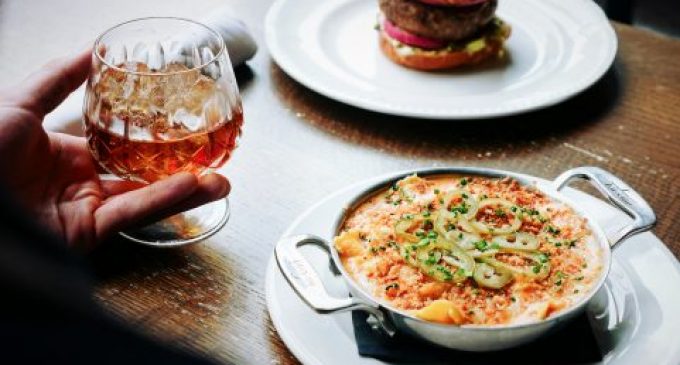Restaurants Hold Up on British High Streets

Many casual dining brands continued to expand on British high streets over the last year, despite the host of challenges facing the eating and drinking out sector fuelling concerns about market saturation. That is among the key findings from the latest edition of the Market Growth Monitor from CGA and AlixPartners. It reveals that Britain had 122,221 licensed premises at December 2017 – a drop of just 0.3% on 12 months earlier, despite mounting cost pressures, weak market confidence and uncertainty over Brexit.
The bulk of closures of licensed premises in 2017 were of drink-led pubs and bars, the Monitor shows. But Britains casual dining brands remained in growth last year, with overall restaurant numbers rising by 0.6% in the year to December. The country now has 16.7% more restaurants than it did in December 2012, underlining the growth of the sector.
The Monitor also pinpoints high streets as the leading source of this growth for restaurant operators. The number of licensed premises on high streets increased by 0.6% in the year to December 2017compared to declines of 0.8% and 0.2% in suburban and rural areas respectively.
CGAs recently-published 2018 Business Leaders Survey suggests that many operators will now be scaling back their new opening plans over this year. Concerns about market saturation and rising property costs, especially among food-led operations, as well as people and food costs are likely to dent the number of licensed premises in 2018. But while several high-profile casual dining brands have announced closures recently, the Market Growth Monitor provides a reminder that not all are turning off the tap as the long-term picture has been of steady growth.
Other trends identified by the new report include:
* Growth in the North West, with the Granada region increasing its number of food-led licensed premises by 2.9% in the year to December 2017
* Tough trading conditions in outer London, where total licensed premises fell 1.9% in the yearcompared to 0.6% growth in inner London
* Consistent growth in food-led pubs and bars, whose numbers have increased by 4.7% since December 2012.
AlixPartners managing director Graeme Smith says: With some casual dining operators announcing restaurant closures at the start of 2018, there has been much talk of over-supply in many of Britains cities and towns. But where exactly is supply exceeding demand? With consumer habits changing so fast, it can be hard to tell – but Market Growth Monitor tables show some of the places that have been particular targets for new openings in the last five years.
Top of the list is Solihull, where the Touchwood retail centre has been a magnet for casual dining brands. Second and third are Milton Keynes and Chelmsford – both towns in which closures have announced recently. Milton Keynes has around 28% more food-led licensed premises than it did a year ago, and may well be at risk of saturationthough its popularity as a place to live among professionals and young families continues to increase. Darlington, Shrewsbury and Loughborough have also seen a steep rise in new restaurants – although it could be argued that these towns were previously badly under-served by operators.
At the other end of the spectrum, Oldham, Wrexham, Rotherham and St Helens have all seen a double-digit fall in licensed premises in the last five years. In all cases, most closures have been pubs rather than restaurants. For all brands, selecting the right towns for openings will be more important than ever.”
CGA vice president Peter Martin adds: 2018 is shaping up into a tough year for pub, bar and restaurant operators, and CGAs Business Leaders Survey suggests we may not have seen the last of closures from some of our biggest casual dining brands. Operators are reining in expansion plans and are predicting an increase in business failures. But our latest Market Growth Monitor is a reminder of the underlying strength of the sector despite the perfect storm of challenges that has been whipped up. People are still going out to eat and drink, and operators who can deliver value for experience and select the right locations for their new openings can still thrive.


































